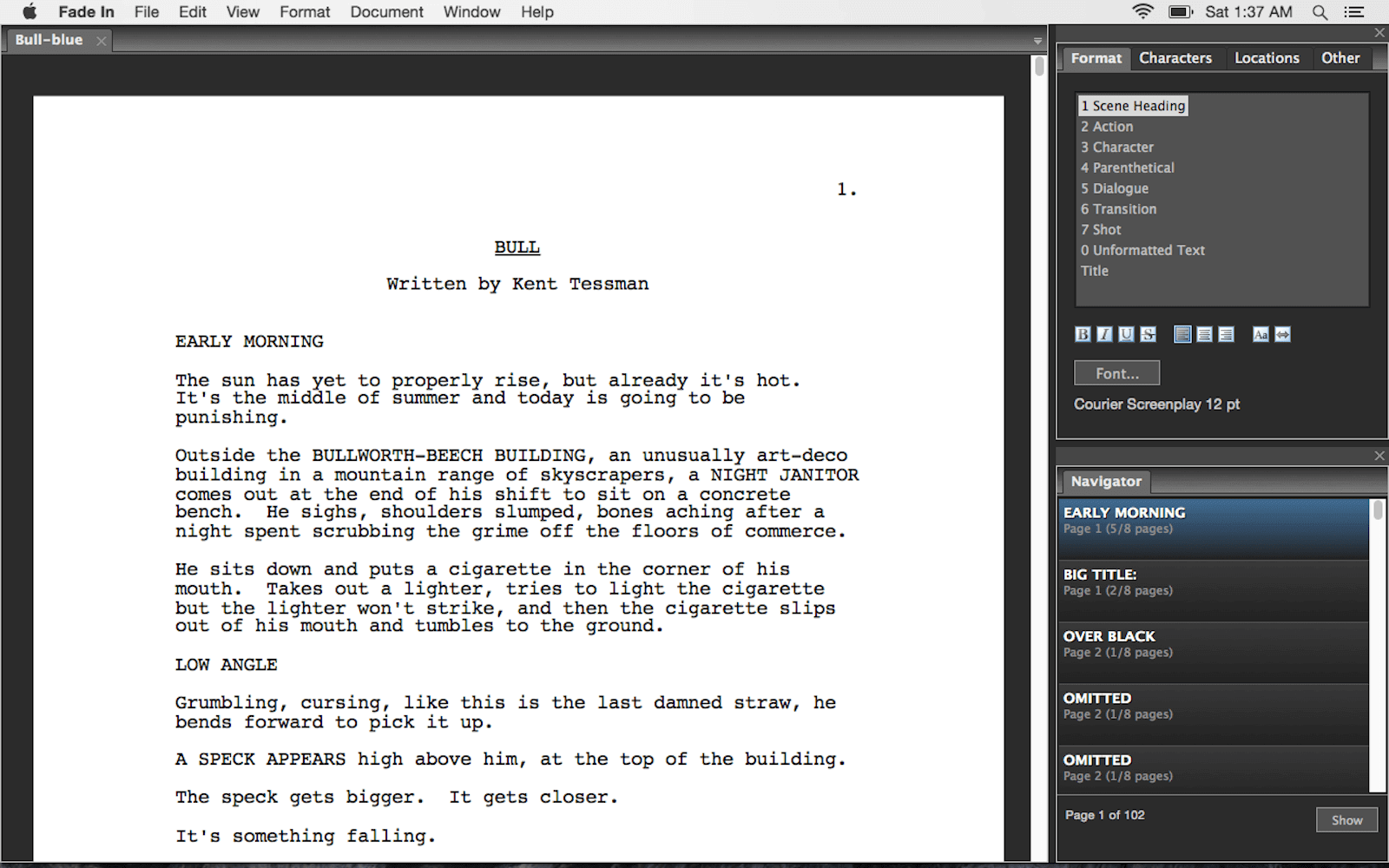

Time and dates should be communicated within the scene description below the slug line - preferably within the first sentence. Lastly, slug lines should not contain dates or times ala EXT. The scene description can be used to convey other information like time of day.
#Screenplay fade in movie#
Obviously, a vampire movie script would be a good excuse to use DAWN or DUSK now and then. Using terms like EARLY MORNING, DAWN, DUSK, in place of DAY or NIGHT should only be used if it is partial to the story. LATER conveys that we’re in the same location established in the previous scene, but at a later time. SAME conveys that the scene takes place within the same moment of the previous scene, as would be the case with telephone conversations, cutting back and forth between action sequences, etc. Some other additions include SAME or LATER in place of DAY or NIGHT. The scene description (referred to as action within screenwriting software) should be used to convey that they are driving. CAR – MOVING – DAY), but it still creates a slug line that is too busy. Some screenwriters add things like MOVING (INT. If your character is inside of a car, which is obviously driving outside, it is an interior scene, not an exterior scene. Why? Because the hallway is still inside the school.

Instead, you create a new location by writing INT. CLASSROOM – DAY when they are in the hall. Thus, if your character is in a school class room, and they are beckoned into the hall by a friend, you don’t write EXT. Interiors are comprised of any location set inside of a building, structure, vehicle, etc. Location Headings - Should Only Have Three Pieces of Information It’s a common mistake, but a very annoying one. Writing THE END in place of either of those will work as well.ĭISSOLVE TO is the proper transition to use within the script, if needed. FADE IN is the first text on the first line of your script (the beginning).įADE OUT - or FADE TO BLACK - is for the end of the script. That’s not what those transitions are for.

Too many novice screenwriters use FADE IN and FADE OUT transitions - and variations thereof - throughout the whole script as stylistic camera or editing directions (more on that later). Only Use FADE IN and FADE OUT at the Beginning and End of Your Script Other unnecessary elements include draft numbers, loglines, character breakdowns, or any other superfluous information.Īll that your title page needs is the title of the script and who it is written by. You have those numbers in your records and in the unlikely event that your script’s content is stolen and produced by another, your records of those numbers will be more than enough.
#Screenplay fade in registration#
While copyright numbers and WGA registration numbers are fine, know that it’s not necessary.

If they want your contact information beyond that email address, they’ll ask for it through email. Chances are your query was sent through email. They don’t need your mailing address, home phone number, cell phone number, and pager number (you may laugh, but it happens). Studios and companies don’t need or want too much information on the title page. Remember and implement these simple rules, and you’ll jump ahead of 95% of the screenplays and screenwriters out there. Once you’ve got these simple rules down, write your next screenplay in 5 weeks with this guide. However, they will certainly make your scripts more professional-looking, streamlined, and easier to read - the happier the script reader, the better chances of getting that coveted Consider or Recommend when they write their script coverage. They won’t catapult you up the Hollywood totem pole. They won’t make you a better cinematic storyteller. There are lessons to master about story, structure, and characterization in your screenplays - these fifteen simple but important screenplay rules have nothing to do with them. This is a guest post by Ken Miyamoto from ScreenCraft.


 0 kommentar(er)
0 kommentar(er)
